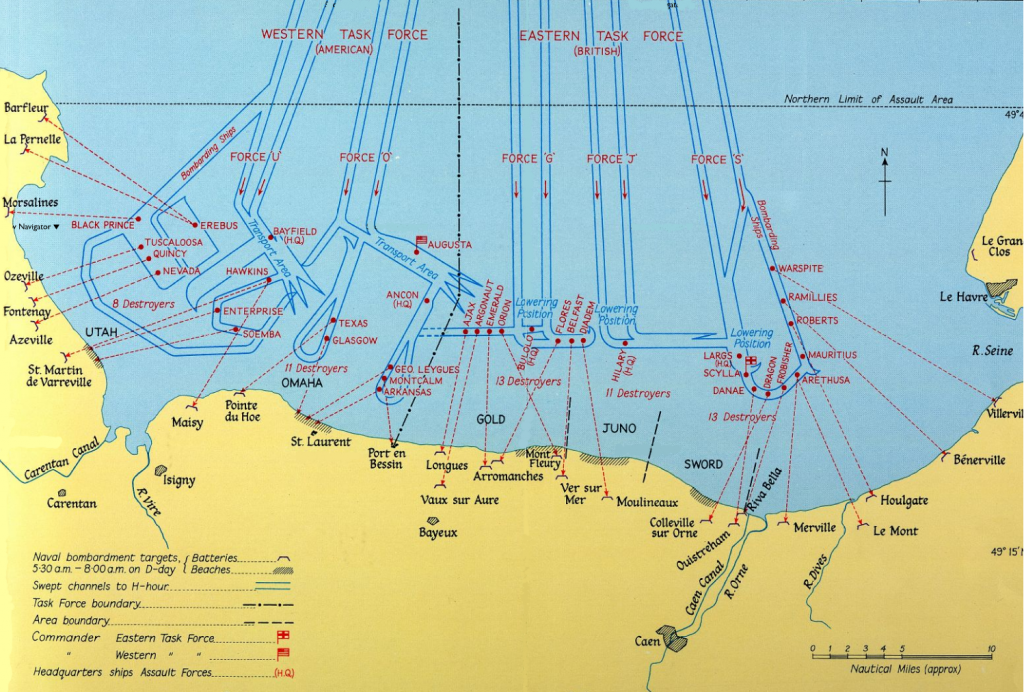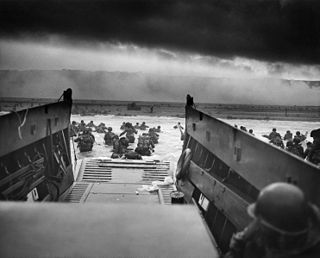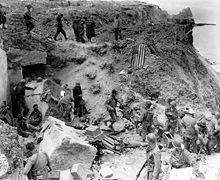Written 10/13/15 – As I am writing this I am in Normandy. I have been in Normandy for about a week. We have been exploring the area for about five days because we are lazy and take breaks. In this blog post I am going to talk about what we have seen and the history of the area, because I hope to earn a history credit for high school when we get back. The first thing we did upon getting here is take a seat and relax. On the second day, we sat around all day again and watched Ole Miss get smashed by Florida. It was depressing and I still can’t understand why we beat Alabama and then lost to Florida. It blows my mind. Anyway, for the rest of the time we have been exploring the D-day beaches and old German bunkers. An interesting thing about the bunkers is that they are scattered throughout the area and they are just open and unrestored. It’s an enter at your own risk system so we have been crawling into a lot of bunkers. Well, Anna and I at least.
So because I like to talk about history, lets jump right in. A brief history of WW2 up until 1944 is as follows: In 1933 Adolf Hitler is elected chancellor of Germany. He quickly turns his position into a military dictatorship and proclaims himself Führer (German for leader or guide). Over the next five years he massively expands Germany’s army and begins to genocide races he believes are inferior. In 1939 Hitler invades Poland and kicks off WW2. Over the next 4 years Hitler expands Germany’s territory from Moscow in the east to the English Channel in the west, creating an empire larger than the height of the Romans. Japan had bombed Pearl Harbor in 1941 causing America to enter the war on the side of the British and Russians. Beginning In 1943 the British and Americans started planning an invasion of mainland Europe. I will refer to England, America, and Russia as the Allies from now on. The Allies decided that the coast of France around Normandy would be the best place for an invasion. The plan called for the largest amphibious landing in history. 1.8 million men would land in one week. Five beaches were selected and code named Gold, Sword, Juno, Utah, and Omaha.

Map of the invasion area showing channels cleared of mines, location of vessels engaged in bombardment, and targets on shore.
In addition to the beach landings, 20,000 paratroopers would be dropped in behind the landing zone to capture key bridges and cutoff German reinforcements. On top of all this, 225 US Rangers would land and capture Pointe Du Hoc (I will discuss that in detail in a little while). The beaches were divided as such: Gold and Sword were given to the British. Juno was Canadian. Utah and Omaha were America. The invasion date was set for June 5, 1944. On June 4 a coded radio broadcast cast from the BBC2 alerted the French Resistance that the invasion would happen in under 48 hours. The French Resistance started cutting phone lines and derailing trains to disrupt the Germans. But the weather on June 5 was terrible, so the invasion was postponed for 24 hours. The weather on June 6 was better so the go order was given. At 0100 on June 6 over 2,000 transport aircraft took off from England and dropped their cargo of paratroopers into Normandy. The planes were scattered in the bad weather and the paratroopers were dropped randomly across a 50 mile front. In spite of this, nearly all of the airborne objectives were captured in the early hours of the day.
At 0710 the Rangers landed at Pointe Du Hoc and the main force landed a little earlier at 0636. they landed on all five beaches simultaneously. 4 out of the 5 beaches were basically walk-ons. Only Omaha encountered stiff resistance. On Omaha nearly nothing went according to the plan.

Men of the 16th Infantry Regiment, U.S. 1st Infantry Division wade ashore on Omaha Beach on the morning of 6 June 1944.
Hundreds of men landed 1000 yards from where they were supposed to. The beach bombing and bombardment missed all of the German bunkers and machine gun nests. The first wave ran into a wall of artillery, interlocking fields of heavy machine gun fire and small arms fire. Only three of the 9 divisions that landed in the first wave survived for more than half an hour or contributed anyone to the final attack later that day. It took two days of heavy fighting to get off of the beach and get inland. After this was the monumental task of unloading the amount of equipment and men needed to move farther inland. Meanwhile, as the Rangers approached Pointe Du Hoc there was a navigational error which led to the boats having to go along the beach for three miles. This resulted in the Germans seeing the boats and opening fire.
By the time they landed one boat had been sunk and 5 men were dead. They then came under fire from the cliff to their left and the top of the cliff they were under. At this time the destroyer USS Satterlee noticed the plight of the Rangers and at great risk to its self moved directly in front of the gun batteries on top of the Pointe to provide fire support, raking the top of the cliff with 127 and 40 mm guns. This had an unexpected consequence; one shell caused part of the cliff to collapse. This luckily did not injure any of the Rangers and instead made it much easier for them to climb the cliffs. The collapse also caused them to be covered from
the incoming fire on their left and right. After the Rangers reached the top of the cliff they found that the gun emplacements they had been sent to destroy had been moved. While under heavy fire from German artillery and an anti-aircraft division, they managed to capture the top of the cliff and destroy the anti-aircraft guns. After they took the top of the cliff they started to push inland to try to find the guns they had been sent to destroy. It did not take them long to find five French artillery pieces and destroy them with thermite grenades. Since there had been five gun stands on Pointe Du Hoc they figured that they had completed their objective. So they dug in and for the next two days fought off repeated counterattacks until they were relieved by soldiers from Omaha beach.
The storming of Pointe Du Hoc was one of the most highly decorated military actions in the history of the United
States armed forces. The capture of the Pointe by 225 lightly armed men helped prevent thousands of deaths during the landing. That’s it for now, my next post will be some photo spam so stay tuned. -CLaff
Instagram- @laffertycaleb




Thanks Caleb for sharing the Normandy Beach Landings – I enjoyed very much of reading the history, seeing the sights thru your eyes – what a great opportunity for you and Family. ( I have worked with Genetta ( your GiGi) for many years)